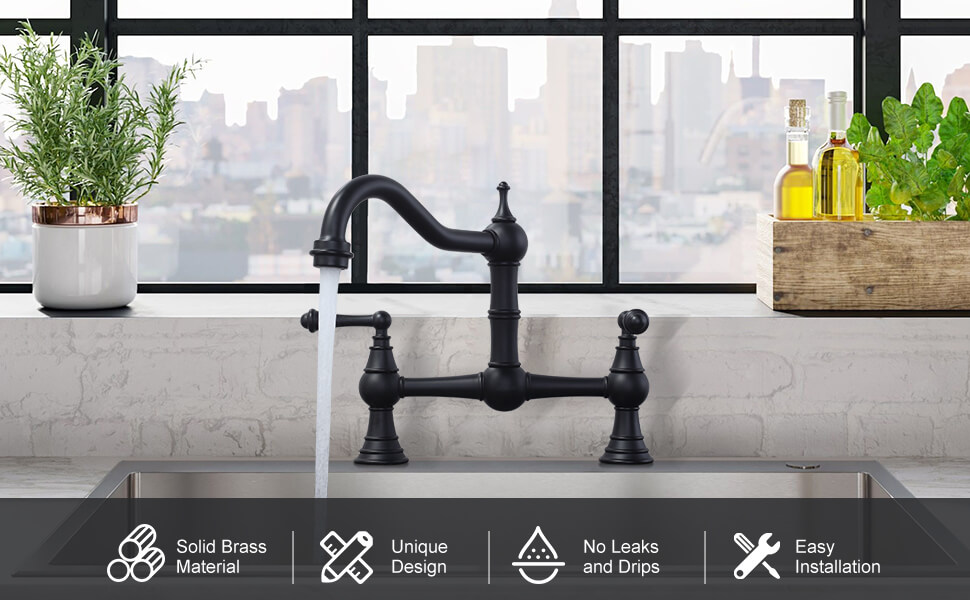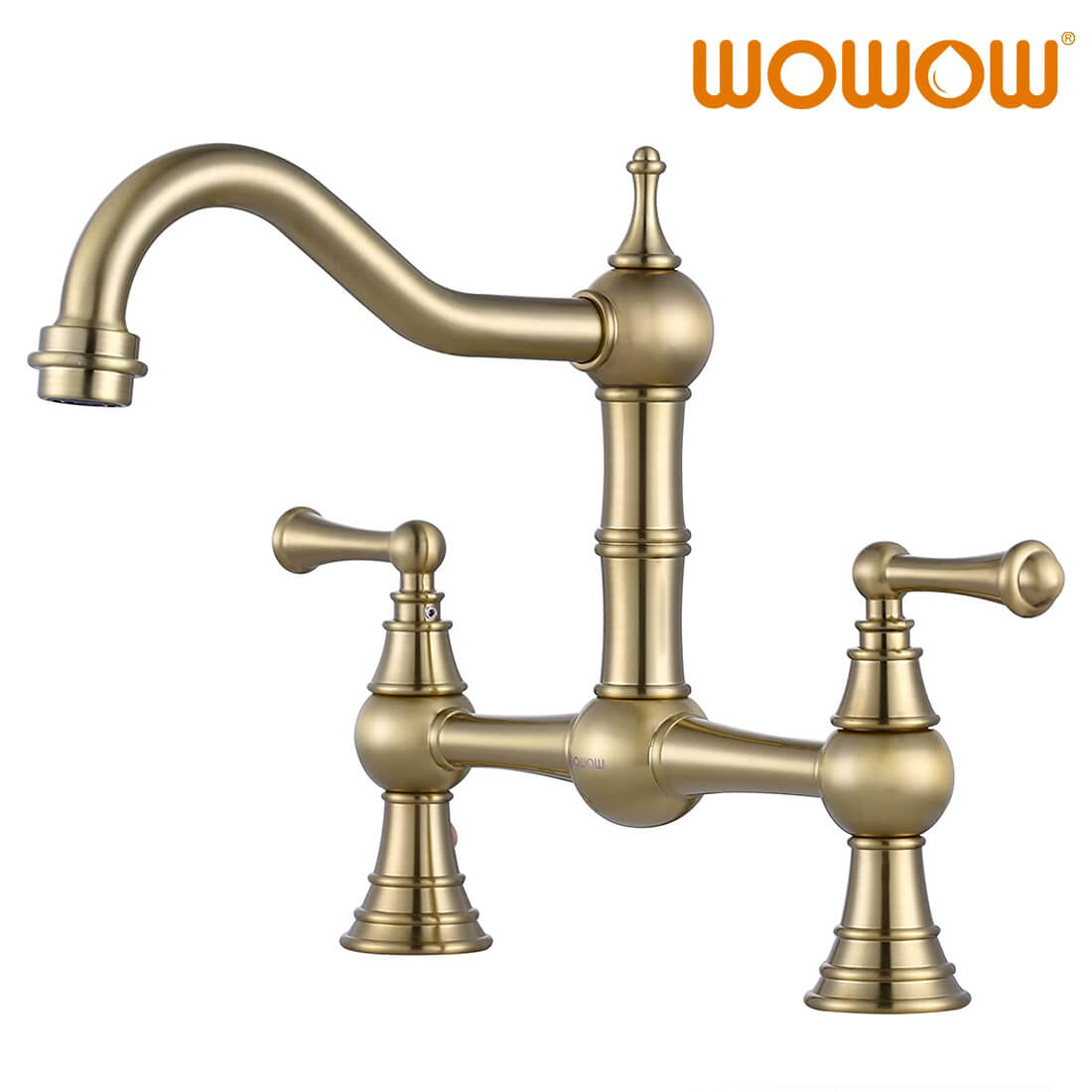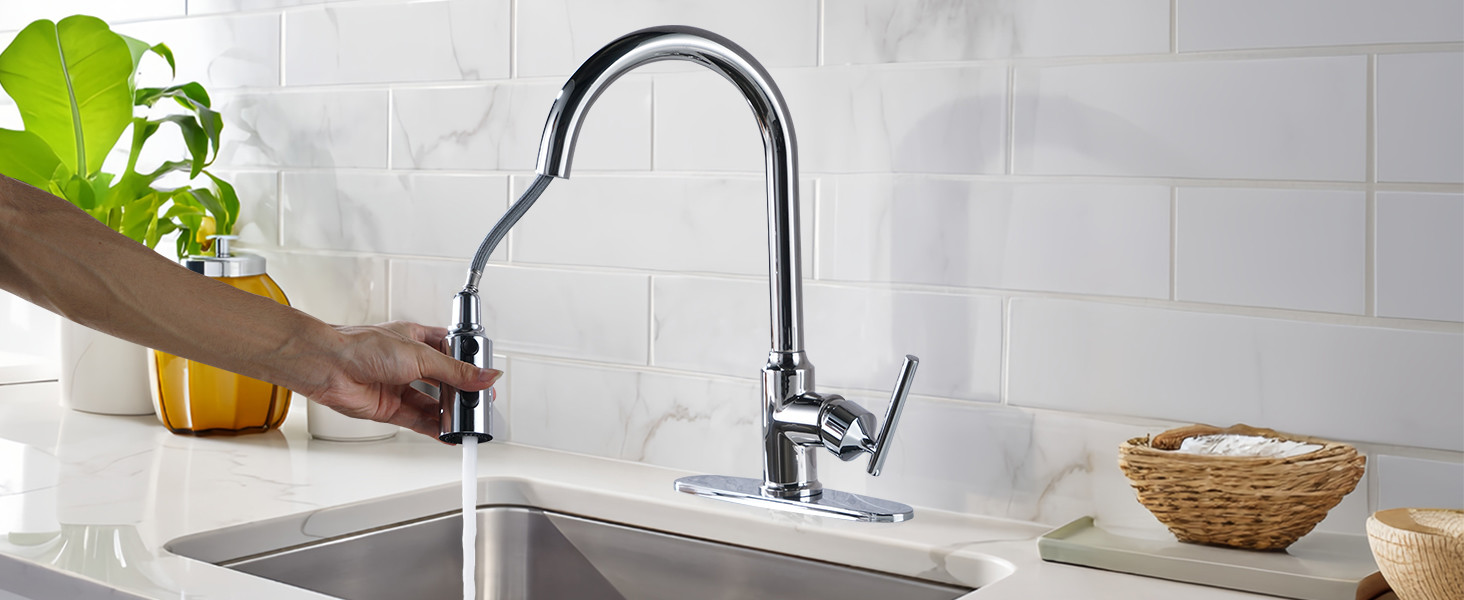
How to maintain your bridge kitchen faucet is essential for ensuring it continues to function smoothly and looks as stylish as the day it was installed. A bridge faucet, characterized by its classic design with separate hot and cold water handles connected by a horizontal bar, can be a beautiful focal point in any kitchen. However, like all kitchen fixtures, it requires regular maintenance to keep it in top condition. Here are some detailed tips on how to maintain your bridge kitchen faucet effectively.
How to Maintain Your Bridge Kitchen Faucet
1. Regular Cleaning
Daily Wipe Down
Every day, wipe down your bridge faucet with a soft, damp cloth to remove any water spots, soap residue, and fingerprints. This simple step can prevent buildup and keep the faucet looking shiny.
Weekly Deep Clean
Once a week, perform a more thorough cleaning. Use a mild dish soap mixed with warm water. Dip a soft cloth or sponge into the solution and gently scrub the entire faucet. Avoid abrasive cleaners or scrubbing pads as they can scratch the finish. Rinse with clean water and dry with a soft towel.
2. Addressing Hard Water Stains
Hard water can leave mineral deposits on your faucet, leading to unsightly stains and potential damage over time. To combat this:
Vinegar Solution
Mix equal parts of white vinegar and water. Soak a cloth in the solution and wrap it around the stained areas. Let it sit for about 15-30 minutes, then remove the cloth and scrub gently with a soft-bristled toothbrush. Rinse thoroughly and dry.
3. Maintaining the Finish
Different finishes require different care. Here’s how to handle some common types:
Chrome and Stainless Steel
These finishes are relatively easy to maintain. Just ensure they are dried after each use to prevent water spots. For tougher stains, a mixture of baking soda and water can be applied gently with a cloth.
Brass and Bronze
These finishes can tarnish over time. Regular cleaning with a mild soap and water solution is key. Avoid acidic or abrasive cleaners. For polished brass, a brass cleaner can be used periodically to maintain its shine.
4. Checking for Leaks
Regular Inspections
Periodically check for any signs of leakage around the handles, spout, and connections. Even small leaks can lead to bigger problems if left unattended.
Tighten Connections
If you notice any leaks, the first step is to check if any parts are loose. Use an adjustable wrench to gently tighten any loose connections. Be careful not to over-tighten, as this can cause damage.
5. Handling Clogged Aerators
Aerators can become clogged with mineral deposits, reducing water flow. Here’s how to clean them:
Removal and Cleaning
Unscrew the aerator from the faucet (usually found at the tip of the spout). Soak it in a vinegar solution for 30 minutes to dissolve any mineral buildup. Use a small brush to clean off any remaining debris. Rinse thoroughly and screw it back onto the faucet.
6. Lubricating the Handles
Over time, the handles of your bridge faucet might become stiff. Lubricating them can help maintain smooth operation.
Use Plumber’s Grease
Turn off the water supply and disassemble the handles according to the manufacturer’s instructions. Apply a small amount of plumber’s grease to the valve stems and reassemble. Turn the water supply back on and test the handles for smooth operation.
7. Replacing Worn Out Parts
Even with the best maintenance, some parts will eventually wear out and need replacement.
Identify and Replace
Common parts that may need replacement include washers, O-rings, and cartridges. Refer to your faucet’s manual for the correct part numbers and instructions. If you’re not comfortable doing this yourself, it may be best to hire a professional plumber.
8. Preventing Corrosion
Corrosion can be a significant issue, especially in areas with high humidity or salty air.
Protective Coating
Consider applying a thin layer of car wax or a specific faucet wax to the surface of your faucet. This can provide an extra layer of protection against moisture and air.
9. Seasonal Maintenance
If you live in an area with seasonal changes that affect water quality, such as increased mineral content in winter, adjust your cleaning routine accordingly.
Seasonal Adjustments
During these periods, increase the frequency of your vinegar soaks and thorough cleanings to prevent mineral buildup.
10. Professional Servicing
While regular at-home maintenance is crucial, having your faucet professionally serviced occasionally can catch issues you might miss.
Annual Check-Up
Consider scheduling an annual inspection by a licensed plumber. They can perform a detailed check-up, including inspecting internal components that are not accessible for routine maintenance.
Conclusion
Maintaining your bridge kitchen faucet involves regular cleaning, addressing hard water stains, checking for leaks, and performing occasional deep cleanings and part replacements. By following these steps, you can ensure your faucet remains functional and aesthetically pleasing for years to come. Proper maintenance not only extends the life of your faucet but also enhances the overall hygiene and functionality of your kitchen space. Remember, the key is consistency – a little effort regularly can prevent major issues and keep your bridge faucet in prime condition.
 WOWOW Faucets
WOWOW Faucets






您好!Please sign in